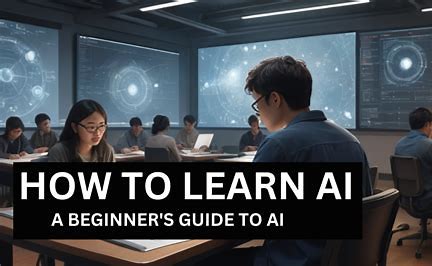Introduction
Artificial Intelligence (AI) and Machine Learning (ML) are transforming industries, from healthcare and agriculture to finance and entertainment. Artificial Intelligence (AI) and Machine Learning (ML) are not just buzzwords; they are shaping the future of industries, driving innovation, and solving complex problems. From self-driving cars to personalized healthcare, AI and ML are transforming how we live, work, and interact. For beginners, these fields might seem daunting, but with the right guidance, anyone can start their journey into AI and ML.
What are AI and ML?
Artificial Intelligence (AI): The simulation of human intelligence in machines that can perform tasks like decision-making and problem-solving. It refers to the development of computer systems that can perform tasks typically requiring human intelligence. These tasks include understanding language, recognizing images, making decisions, and more. AI systems are designed to mimic human thought processes but often perform tasks faster and more accurately.
Example: Virtual assistants like Siri and Alexa that respond to voice commands.
Machine Learning (ML): ML is a subset of AI focused on creating systems that learn patterns from data. Instead of being explicitly programmed, ML algorithms use data to find patterns and make predictions or decisions.
Example: Netflix recommending shows based on your viewing history.
How AI and ML Work
Data: AI systems rely on large datasets to train models. Data is the foundation of AI and ML. Models learn from structured (e.g., spreadsheets) or unstructured data (e.g., images, audio).
The more data you have, the better your model can learn and make accurate predictions.
Algorithms: Algorithms are the set of rules or instructions a computer follows to solve problems. In ML, algorithms analyze data to identify patterns and relationships. They are instructions that enable machines to analyze data and recognize patterns. Common algorithms include decision trees, neural networks, and support vector machines.
Models: Once trained, the model is used to make predictions or automate tasks. For example, a trained model might predict house prices based on features like size, location, and age.
Applications of AI and ML
Healthcare: AI-powered diagnostic tools for detecting diseases. AI-powered tools can analyze medical images to detect diseases like cancer or predict patient outcomes.
Chatbots provide basic health advice and guidance to patients.
Finance: Fraud detection systems analyze transaction patterns to identify suspicious activities and personalized financial advice.
ML algorithms are used for personalized financial planning and stock market predictions.
E-commerce: Recommendation engines suggest products based on user behavior.
AI optimizes supply chain operations by forecasting demand and managing inventory Recommendation systems (e.g., “You might also like” on shopping sites).
Agriculture: Drones and sensors help farmers monitor crop health.
Predictive models assist in determining the best time for planting or harvesting.
Getting Started
Learn Python: Python is the go-to programming language for AI and ML due to its simplicity and vast library ecosystem. Start by learning the basics of Python and then explore specialized libraries:
- NumPy: For numerical computations.
- Pandas: For data manipulation and analysis.
- Scikit-learn: For implementing basic ML algorithms
Understand the Basics of Statistics and Mathematics: Learn concepts like linear algebra, probability, and calculus. These form the foundation of most ML algorithms.
Enroll in Courses: Platforms like Coursera and edX offer beginner-friendly AI/ML courses. Examples
- Coursera: Machine Learning by Andrew Ng.
- edX: AI for Everyone by Stanford University.
- Kaggle: Free tutorials and competitions for hands-on learning.
Build Small Projects: Practical experience is crucial. Begin with simple projects like:
- Predicting house prices based on features like size and location.
- Classifying images (e.g., cats vs. dogs).
- Sentiment analysis on Twitter data.
Recommended Tools for Beginners
Google Colab: A free, cloud-based environment to write and execute Python code. It’s beginner-friendly and doesn’t require local setup.
TensorFlow and Pytorch: It is a frameworks for building deep learning models. TensorFlow is great for production-ready models, while PyTorch is preferred for research and experimentation.
Jupyter Notebooks: An interactive platform for writing and sharing code, especially useful for data analysis and visualization.
Books: Some great books that can help to kickstart the journey are
- "Hands-On Machine Learning with Scikit-Learn, Keras, and TensorFlow" by Aurélien Géron.
- "Deep Learning for Beginners" by Dr. Patti Good.
Challenges Beginners May Face and How to Overcome Them
- Overwhelming Jargon: Start with basic terminology and gradually dive deeper. There are plenty of beginner-friendly tutorials online.
- Lack of Data: Use open datasets from platforms like Kaggle or Google Dataset Search.
- Complex Concepts: Break down complex topics into smaller, manageable parts. Focus on understanding one concept at a time.
- Consistency: AI and ML require practice. Dedicate regular time to learning and experimenting.
Conclusion
AI and ML are powerful tools that anyone can learn with dedication and the right resources. These technologies are shaping industries and solving real-world problems, offering endless opportunities for innovation. Start small, stay consistent, and you’ll soon be building intelligent solutions that can make a difference.
